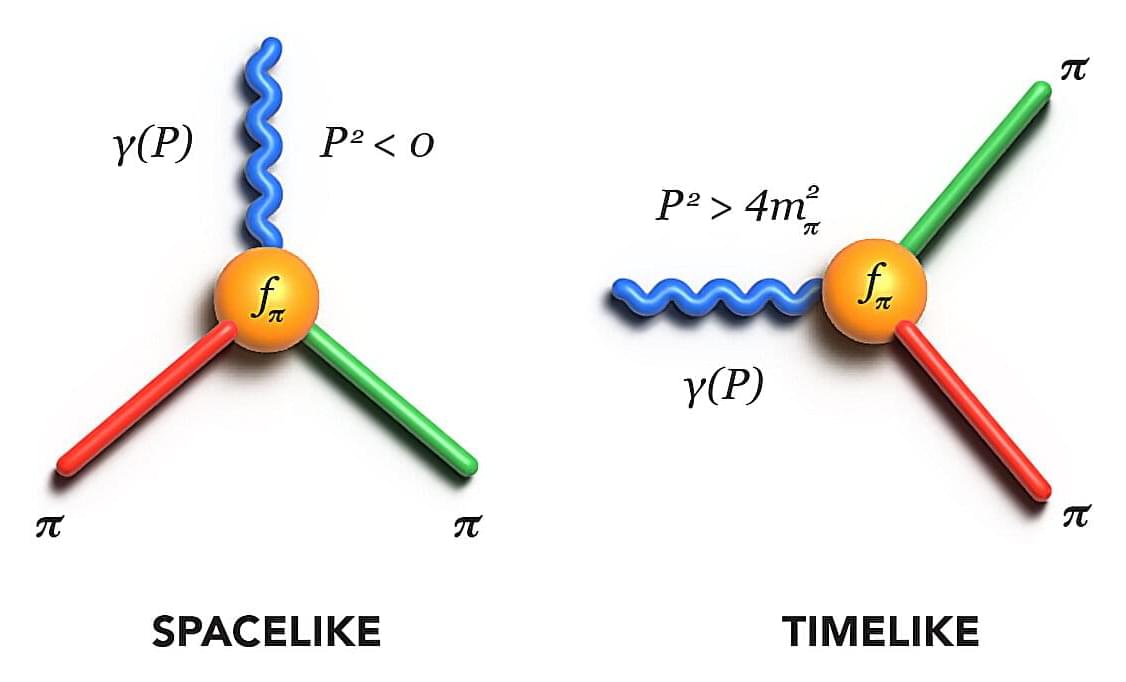An early-career physicist mathematically connects timelike and spacelike form factors, opening the door to further insights into the inner workings of the strong force. A new lattice QCD calculation connects two seemingly disparate reactions involving the pion, the lightest particle governed by the strong interaction.
As an undergraduate student at Tecnológico de Monterrey in Mexico, Felipe Ortega-Gama worked at the U.S. Department of Energy’s Thomas Jefferson National Accelerator Facility as part of the Science Undergraduate Laboratory Internships program. There, Ortega-Gama worked with Raúl Briceño, who was a jointly appointed staff scientist in the lab’s Center for Theoretical and Computational Physics (Theory Center) and professor at Old Dominion University.
Briceño introduced him to quantum chromodynamics (QCD), the theory that describes the strong interaction. This is the force that binds quarks and gluons together to form protons, neutrons and other particles generically called hadrons. Theorists use lattice QCD, a computational method for solving QCD, to make predictions based on this theory. These predictions are then used to help interpret the results of experiments involving hadrons.
